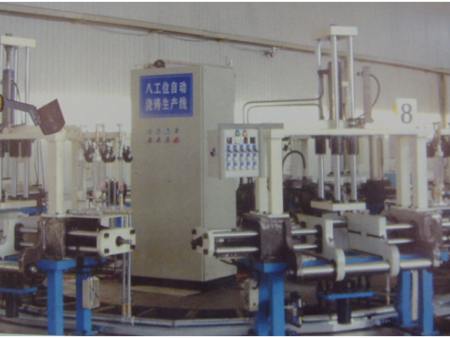
In the low-pressure casting machine, dry compressed air is introduced into a sealed crucible (or sealed tank). Under the action of gas pressure, the molten metal enters the sprue 3 along the riser and rises, and enters through the inner sprue smoothly Type, keep the gas pressure on the liquid surface in the crucible until the casting is completely solidified. Then release the gas pressure on the liquid surface, the unsolidified metal in the riser flows back to the crucible, open the mold again, and take out the casting. Differential pressure casting is based on low pressure casting. Cover the mold with a sealed lid, and introduce compressed air into the crucible and the lid at the same time. The pressure in the crucible is slightly higher, so that the molten metal in the crucible is filled into the mold through the riser under the action of the pressure difference, and under pressure Crystallization. It is a combination of low pressure casting and pressure crystallization.
Before using the low-pressure casting machine, the machine must be lubricated to keep the parts in normal use. It is also necessary to clean the gravity casting machine to avoid abnormal operation of the gravity casting machine due to excessive dust. Regularly check the components of the low-pressure casting machine, If serious damage and wear are found, it should be replaced in time to avoid affecting normal production.
The molten aluminum in the raw material furnace of the low-pressure casting machine should also be treated regularly. The slag and oxygen removal in the furnace should be done well, and the alumina on the furnace surface should also be cleaned regularly. During the use of the gravity casting machine, the low-pressure casting machine should be checked every day and maintenance, which can not only ensure the stability of mechanical equipment in use, but also discover potential hidden dangers of the machine during maintenance.
Common Problems in Aluminum Alloy Gravity Casting
(1) Reasons: (1) The temperature of the mold is too low and the exhaust is poor; (2) The pouring speed is too slow, there may be continuity, the planning of the gating system is unreasonable, and there are too few gates; ③The planned wall thickness of the casting is too high Small, possibly short but necessary rounded corners.
(2) Treatment method: (1) Move the mold temperature, reasonably set the ventilation slot or exhaust plug to make the exhaust unobstructed; (2) Properly move the air hole
(1) Reasons: (1) The pouring speed is too fast, and the pouring temperature is too high; (2) The exhaust is not smooth, and the exhaust volume may be too large; ③The melting temperature is too high.
(2) Treatment method: (1) Reduce the pouring speed, properly reduce the pouring temperature, and pour smoothly; ②Control the exhaust volume to make it appropriate; ③Strictly control the melting temperature to prevent the temperature from being too high.
(1) Reasons: ①The aluminum liquid is not stirred sufficiently before pouring, and the temperature is too high during pouring; ②The coating is uneven and may be too thick.
(2) Treatment method: (1) Before pouring, the aluminum liquid should be fully stirred evenly, and the pouring temperature should be appropriately reduced. ②Appropriately reduce the wall thickness of the casting to shorten the solidification speed of the coating.
